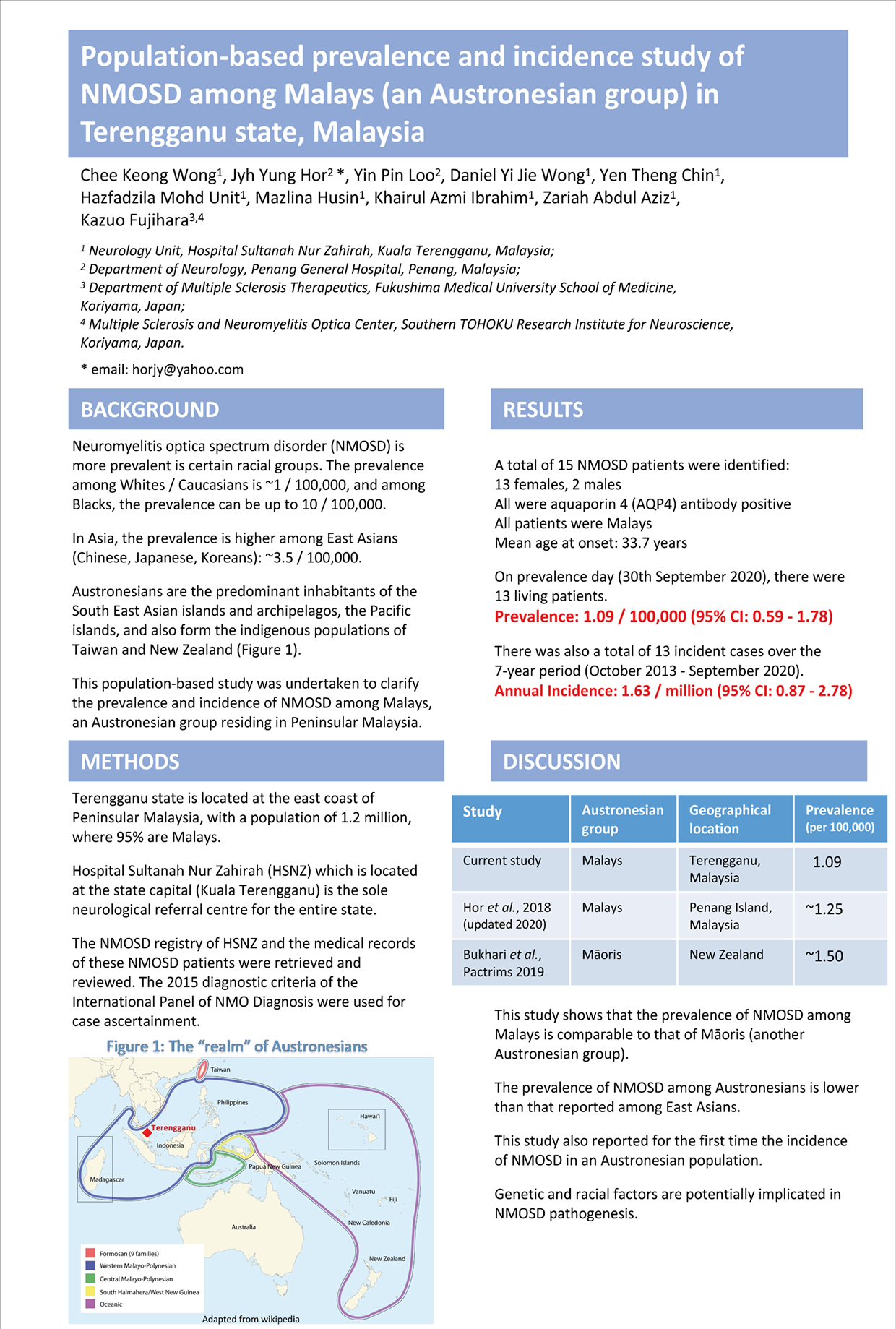Population-based prevalence and incidence study of NMOSD among Malays (an Austronesian group) in Terengganu state, Malaysia
Abstract
Background:
Neuromyelitis optica spectrum disorder (NMOSD) is more prevalent in certain racial groups. In Asia, the prevalence is higher among East Asians (~3.5/100,000). Austronesians are the predominant inhabitants in the South-East Asian islands and archipelagos, the Pacific islands, and also form the indigenous populations of Taiwan and New Zealand. This population-based study was undertaken to clarify the prevalence and incidence of NMOSD among Malays, an Austronesian group residing in Peninsular Malaysia.
Methods:
Terengganu state is located at the east coast of Peninsular Malaysia, with a population of 1.2 million, where 95% are Malays. Hospital Sultanah Nur Zahirah (HSNZ) which is located at the state capital is the sole neurological referral center for the entire state. The NMOSD registry at HSNZ and the medical records these NMOSD patients were reviewed. The 2015 diagnostic criteria of the International Panel for NMO Diagnosis were used for case ascertainment.
Results:
A total of 15 NMOSD patients were identified (13 females, 2 males). All patients were Malays, all were seropositive for aquaporin 4 antibody, and with mean age at onset of 33.7 years. On prevalence day (30th September 2020), there were 13 living patients, and the prevalence was calculated as 1.09/100,000 (95% CI: 0.59-1.78). There was also a total of 13 incident cases over the 7-year period (October 2013 - September 2020), and the annual incidence was calculated as 1.63/million (95% CI: 0.87-2.78).
Conclusions:
Our study reported the NMOSD prevalence among Malays in Terengganu (1.09/100,000), which was comparable to the estimated prevalence of 1.5/100,000 among Māoris in New Zealand (another Austronesian group). The prevalence among Austronesians is lower than that reported among East Asians. This study also reported for the first time the NMOSD incidence in an Austronesian population. Genetic and racial factors are potentially implicated in NMOSD pathogenesis.

